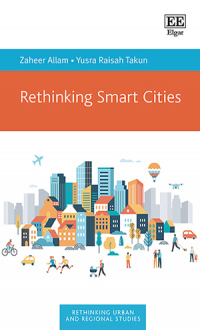
In Rethinking Smart Cities, the authors explore what they call the 15-minute city concept—which promotes human livability by ensuring that residents have access to the basic needs within the 15-minute travel time either by walking or cycling. They argue that this concept will gain more prominence when combined with future technologies in cities such as 6G, AI applications and digital twins. Their vision is that this approach will not only enhance livability but also help achieve other goals like global commitments to achieve decarbonization.
The key in my view is their effort in emphasizing that technology cannot be decoupled from the human element (i.e., beyond a technocentric approach) when urban residents ought to participate in the informed process of improving resilience and livability in cities. Technology is not just an application of a product—it’s a network of systems—the socio-political, economic and cultural systems.
The book conveniently introduces what a smart city is and offers a historical landscape of basic technological advancements in cities. Yet, “smartness” is not everything. Today, cities face numerous challenges including the ability to cope with emerging smart technologies (i.e., both the physical infrastructure and social aspects). Relatedly, the next several chapters provide an overview of some of the key issues smart cities ought to address—such as sustainability, inclusivity, efficiency and data security—as an opportunity to embed collaborative problem-solving in the planning process. Finally, the last few chapters offer a vision for what’s emerging: 6G technologies (and IoT), a 15-minute city planning concept and augmented automation.
The book leaves incredible room for afterthought. We as implementers or users of smart technologies in cities ought to think carefully about how we can participate meaningfully in the planning process—and collaboratively anticipate future challenges or vulnerabilities—as new technologies continue to emerge and become integrated into urban livelihoods. Perhaps truly “smart” cities will have figured out public participation and informed decision-making in future planning practices
